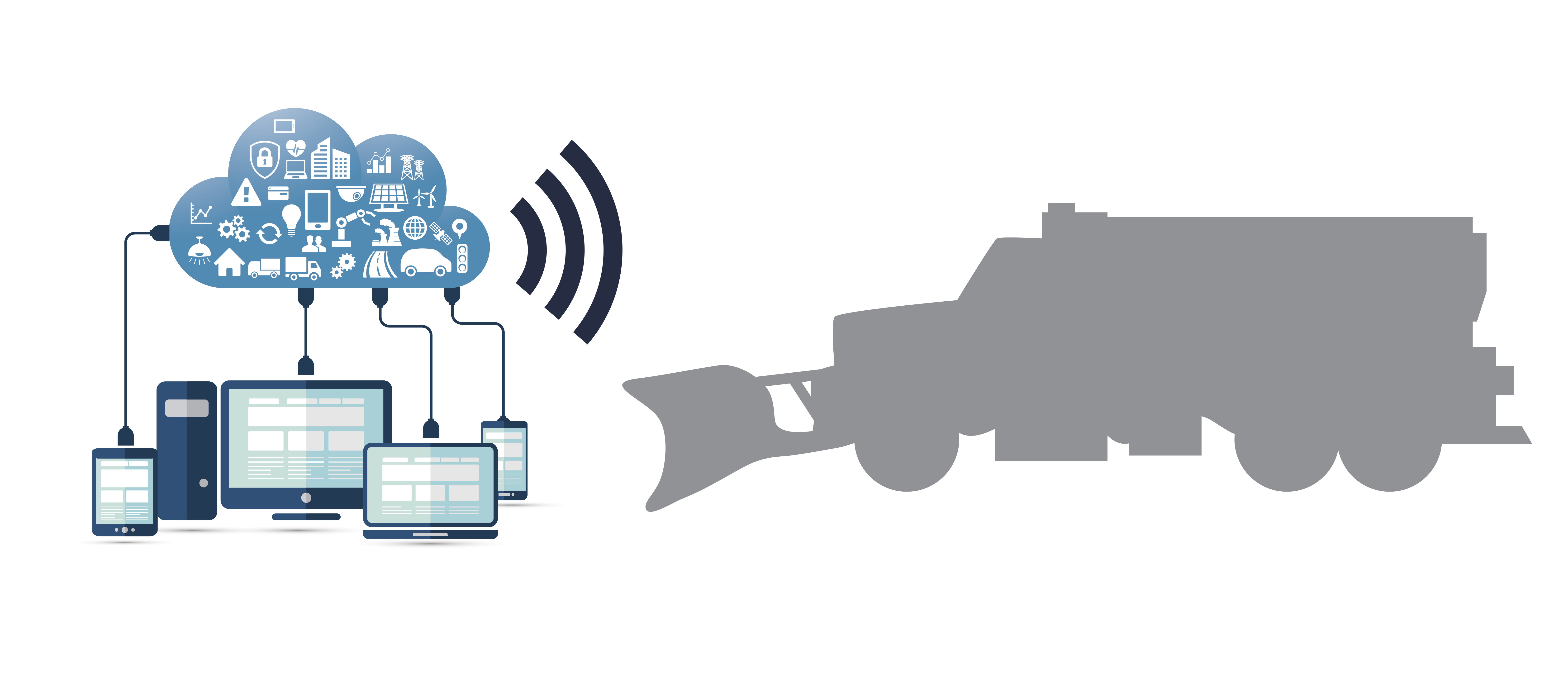The Future of IoT in the Work Truck Industry
Featured Cover Story in Muncie Power Quarterly, Issue 1, 2018
 The IT world is full of fun acronyms that give a flair of mystery to technologies, trends and processes. IoT – lowercase o, thank you – stands for the Internet of Things. Quite catchy, isn’t it? Traditionally, the Internet has consisted of client computers acting as interfaces for people and server computers providing services like websites. IoT however introduces a third, connected category: things which consists of embedded computers that monitor and/or control items not traditionally seen as smart.
The IT world is full of fun acronyms that give a flair of mystery to technologies, trends and processes. IoT – lowercase o, thank you – stands for the Internet of Things. Quite catchy, isn’t it? Traditionally, the Internet has consisted of client computers acting as interfaces for people and server computers providing services like websites. IoT however introduces a third, connected category: things which consists of embedded computers that monitor and/or control items not traditionally seen as smart.
Current Common IoT Uses
The majority of current high-profile IoT devices are designed for the consumer. Examples include smart thermostats; appliances such as refrigerators, robotic vacuums and toasters; cars; and security and video surveillance systems. With a connection to the Internet, each act as a remote monitor and may be controlled via a smartphone app.
Imagine returning home from a business trip in winter. Wouldn’t it be nice for your car to be warm and the windows defrosted by the time you got to it? With IoT, you can. Wouldn’t it be nice if your house saved energy while you were away with a lower water heater and furnace temperature only to be back to normal by the time you arrived? With IoT, you can. Wouldn’t it be nice to know your house is safe while away through continual reporting of vital statistics and alarms like door/window status, ambient temperature, moisture sensors, fire sensors and security cameras? With IoT, you can.
Potential Uses of IoT in the Work Truck Industry
IoT in the work truck industry is in its infancy, but I see a few areas where it could grow and make a large impact.
Fleet management isn’t new, but when you add real-time reporting a whole new world emerges. All trucks have sensors on them; however, the data is isolated on the truck. Connecting the existing sensors to the Internet and adding new sensors can provide real-time reporting of truck status, health and usage. Monitoring these mechanical and hydraulic metrics can provide an early warning system and facilitate a tailored, preventative maintenance plan to improve overall truck health.
Route optimization – Fleets who typically drive standard routes can have their routes updated in real time to respond to changing road or traffic conditions through traffic monitoring and location and weather reporting. Through cloud-based analytics further optimization can also be achieved.
Operational transparency – Fleets who serve the public can improve customer satisfaction through the adoption of tools that give transparency into its operations. Real-time location reporting and sensors that monitor road conditions can help with this transparency.
Concerns of IoT
Security – As cyberattacks are on the rise, improperly secured IoT devices could be compromised and utilized for nefarious purposes. For example, millions of IoT devices could be utilized in a botnet to implement a massive Distributed Denial of Service (DDoS) attack against critical servers.
Privacy – Your toaster could be spying on you. The old maxim frequently credited to Sir Francis Bacon “knowledge is power” holds true. Corporations who collect data on customer trends and usage can gain the upper hand against their competition. Are corporations being transparent in what data is being monitored and collected? Even if the intentions are initially altruistic, who is to say that corporations will always use their newfound power for good?
Management – Once the IoT device is in the field, how can updates be deployed? How can access to the device, and data, be limited to only authorized agents? How will device or network compromise be handled and a secure posture regained? Too often the desire of being first to market causes these concerns to be overlooked.
Future of IoT
Imagine a world with fleets of either manned or autonomous work trucks managed via a centralized Fleet Operations Center (FOC). The Fleet Operations Center is responsible for managing the workload, upkeep and compliance of the fleet. Trucks are dispatched, coordinated and serviced with help from the data flowing into the Fleet Operations Center. Predictive failure analytics can minimize truck downtime and, by extension, optimize fleet size.
Utilities, in the event of a power outage, can improve transparency by reporting truck locations, a power network hub status, an estimated time of arrival and an outage scope to a granular level. Route-optimized snow plows can report location, road conditions, the amount of product applied to the road surface and when the plow will arrive on your street. And with IoT sensors, much of this value is automatic.
With IoT, the future can be transparent and life a little bit easier. Can you picture it?


